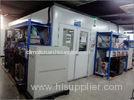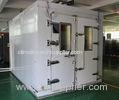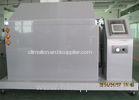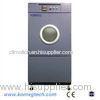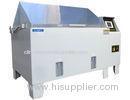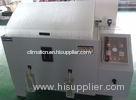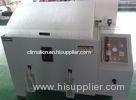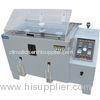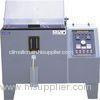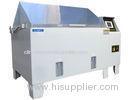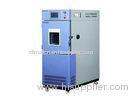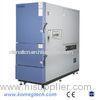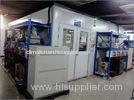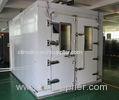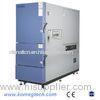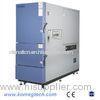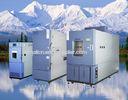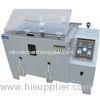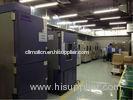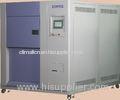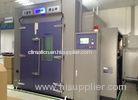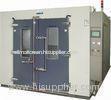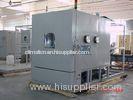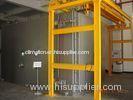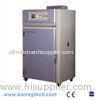|
KOMEG Technology Ind Co., Limited
|
Environmental 225L Rapid Rate ESS Chamber Temperature Cycling Chamber
| Place of Origin: | Zhejiang, China (Mainland) |
|
|
|
| Add to My Favorites | |
| HiSupplier Escrow |
Product Detail
10 ºC /Min 225L Rapid-Rate Thermal Cycling Chamber for New Products Failure Detecting ESS</spa
10 ºC /Min 225L Rapid-Rate Thermal Cycling Chamber for New Products Failure Detecting ESS
Average vs. Linear Temperature Transitions
In the earlier days of ESS, environmental chambers offered air temperature cycling transition rates on the order of 5°C per minute. This transition rate was often referred to as "average" by most chamber manufacturers. In reality, during an average rate temperature transition, the
air temperature rate of change may vary greatly from the average rate.
For temperature pulldowns with mechanical cooling, dT/dt will be much greater than the average in the early stages of the pulldown and much below the average as the low temperature extreme is approached. When plotted out, the time/temperature relationship is a curve with a steeper slope at the beginning of the pulldown and a flatter slope at the end, but nevertheless resulting in some average transition rate for the complete pulldown.
1. Overview of Environmental Test Chamber:
Developed to help electronics manufacturers detect product defects and production flaws, ESS is widely used in military and aerospace applications, less so for commercial products. The tests need not be elaborate, for example, switching an electronic or electrical system on and off a few times may be enough to catch some simple defects that would otherwise be encountered by the end user very soon after the product was first used. Tests typically include the following:
- Temperature variations
- Vibration tests
- Pressure
- Flexibility tests
Such a chamber can be used:
1) as a stand-alone test for environmental effects on test specimens
2) as preparation of test specimens for further physical tests or chemical tests
3) as environmental conditions for conducting testing of specimens
4) Temperature adaptability test under the condition of rapid change, or gradient for electrical, electronic, instruments and other products or spare parts, particularly applies to environmental stress screening test(ESS)
2. What Is Environmental stress screening (ESS)
ESS refers to the process of exposing a newly manufactured or repaired product or component (typically electronic) to stresses such as thermal cycling and vibration in order to force latent defects to manifest themselves by permanent or catastrophic failure during the screening process. The surviving population, upon completion of screening, can be assumed to have a higher reliability than a similar unscreened population
3. Standards Implemented and Met
GB10592-89 Technical requirements for high and low temperature test chamber
GB2423.1-1989 Low temperature test
GB2423.2-1989 High temperature test mode
4. Techinical Parameter:
|
Model |
ESS-SL Series |
|
225SL10 |
|
|
Working Chamber Volume(L) |
225L |
|
Temp Rate of Change( ºC /Min) |
10 ºC /Min |
|
Temperature Range |
-70 ºC+100 ºC( Rapid Temp Change -55 ºC+85 ºC Full Linear Control) |
|
Humidity Constancy |
±0.5 ºC |
|
Temp Constancy |
±3.0 ºC |
|
Exterior Material |
Cold-rolled steel sheet (Rust proof & Plastic Spray treated )/ Stainless Steel |
|
Interior Material |
Stainless Steel Plate(SUS 304) |
|
Insulation Material |
Rigid Polyurethane Foam |
|
Safety Devices |
over pressure,over heat and over current protection for compressor, over temp. protection, |
|
Compressor |
Semi-Hermetic Compressor |
|
Cooling Mode |
Water Cooled |
|
Control system |
Balanced Temperature & Humidity Control System(BTC type) |
























